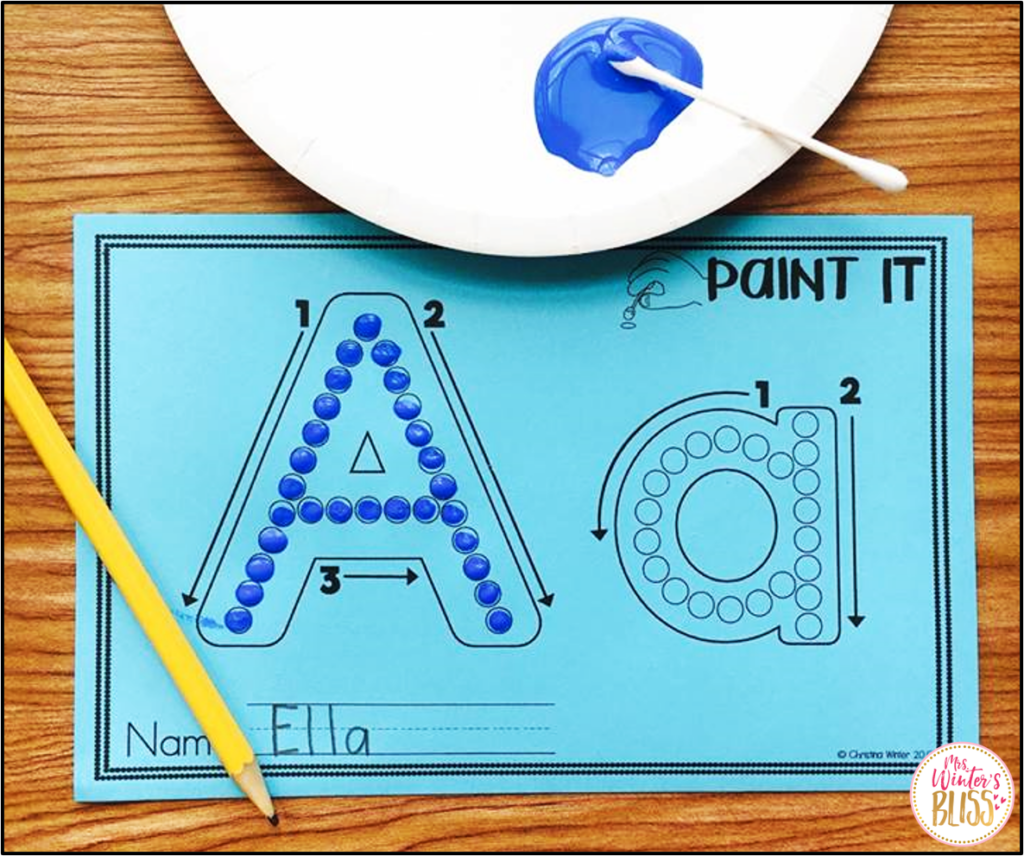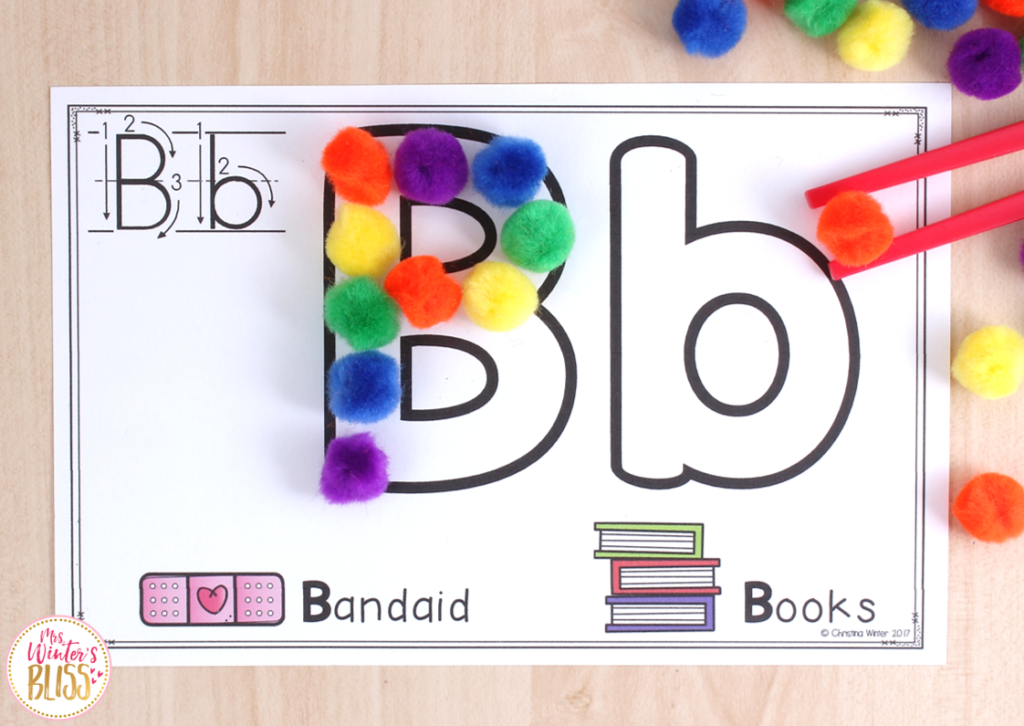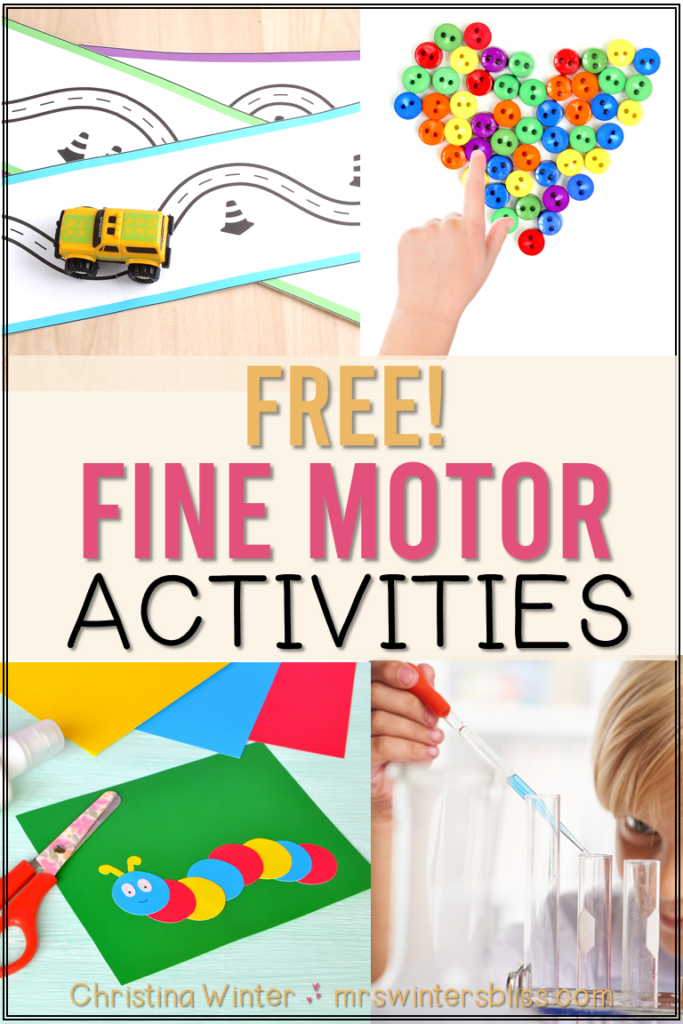
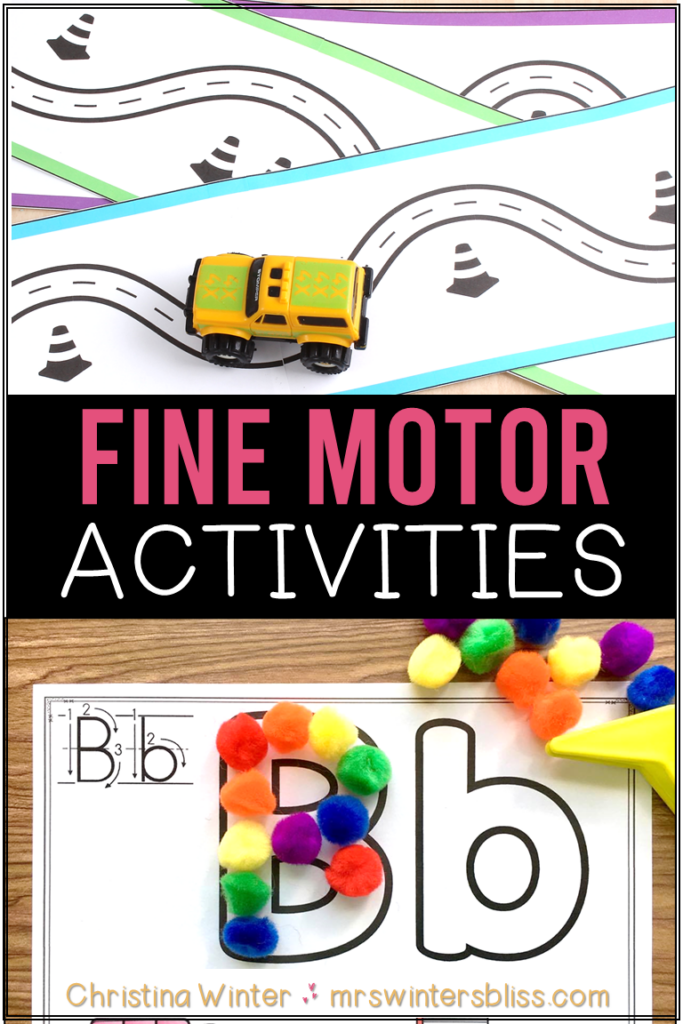
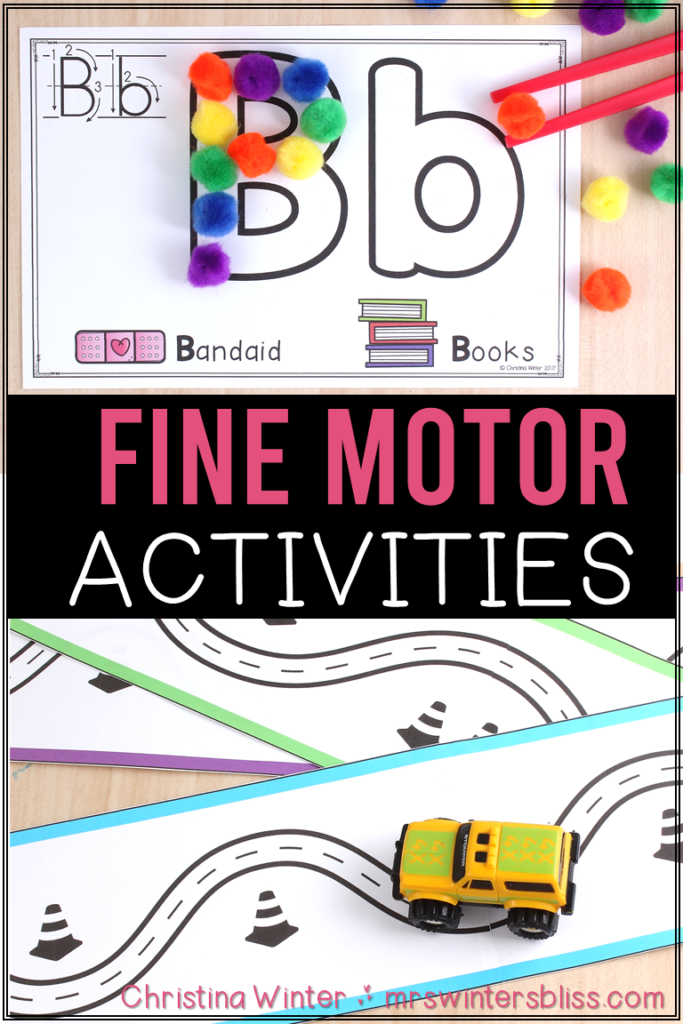
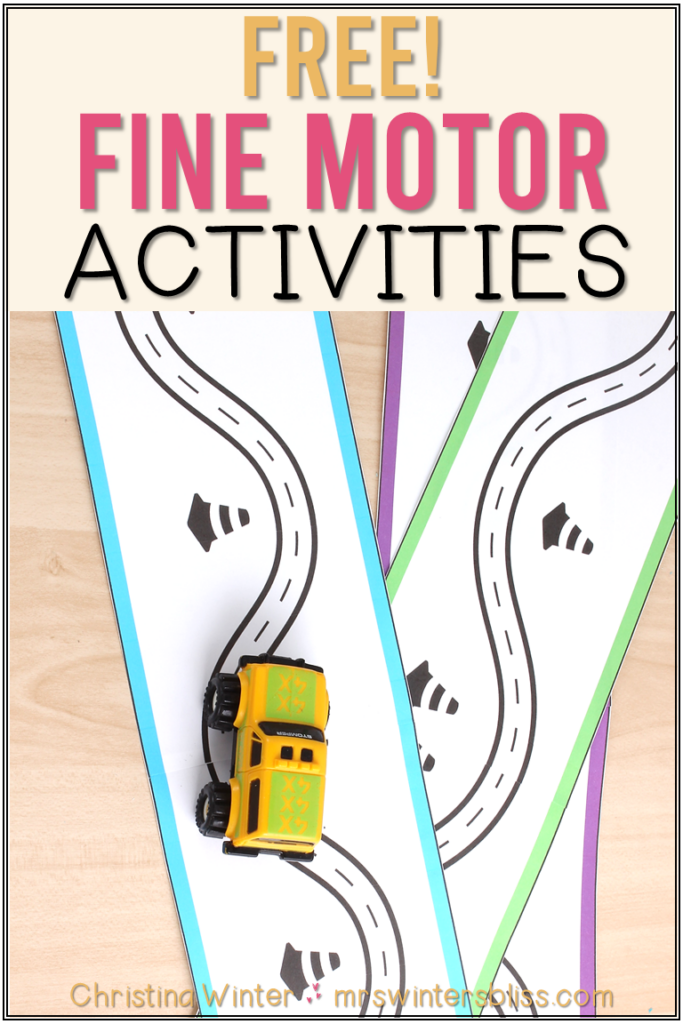
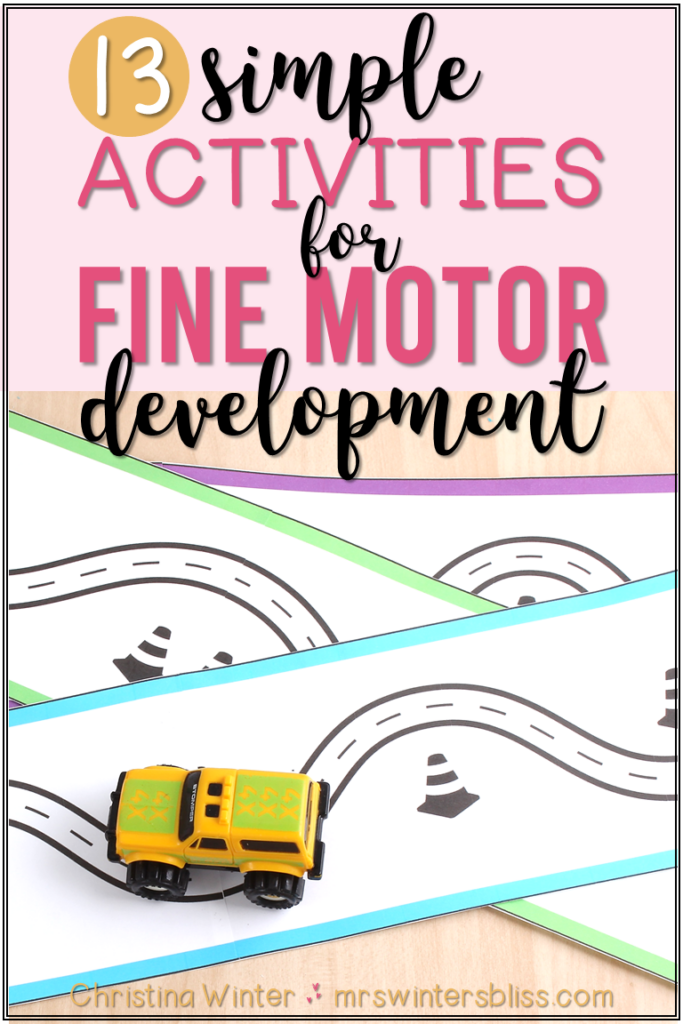
Free fine motor activities for kids to help students with the development of pencil grip, prewriting, & scissor skills with simple things you have at home. MAke sure to download the freebie in the post!
Fine motor skills are those that involve a refined use of the body’s small muscles, such as those in the hands, fingers, thumbs and wrists. The development of these skills allow children to complete important life skills like writing, zipping, buttoning and tying, and they are essential for success in the classroom.
But fine motor skills don’t develop on their own! Just like reading, writing, and math, they require children to practice activities that will strengthen them! We, as teachers and parents, can help this process by encouraging children to play, explore and interact with a variety of materials and tools in creative and new ways.
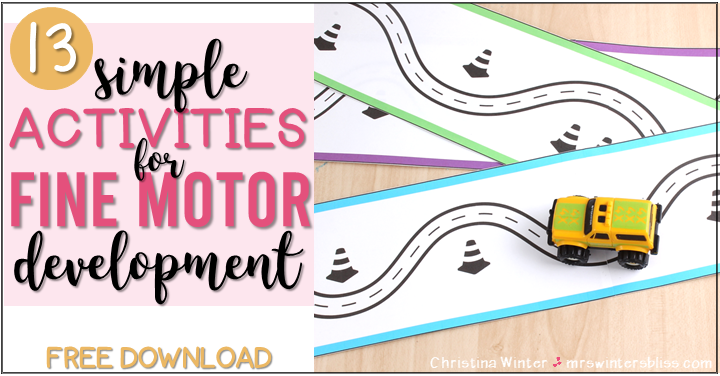
Today I’m excited to share with you a list of simple fine motor activities you can do with children in the home or classroom! These are activities your students will find fun and engaging, and only require materials you can find at home or can easily grab on Amazon!
Simple Activities for Fine Motor Development
Arrange Buttons: Encourage children to arrange buttons to form letters, numbers, names and shapes.
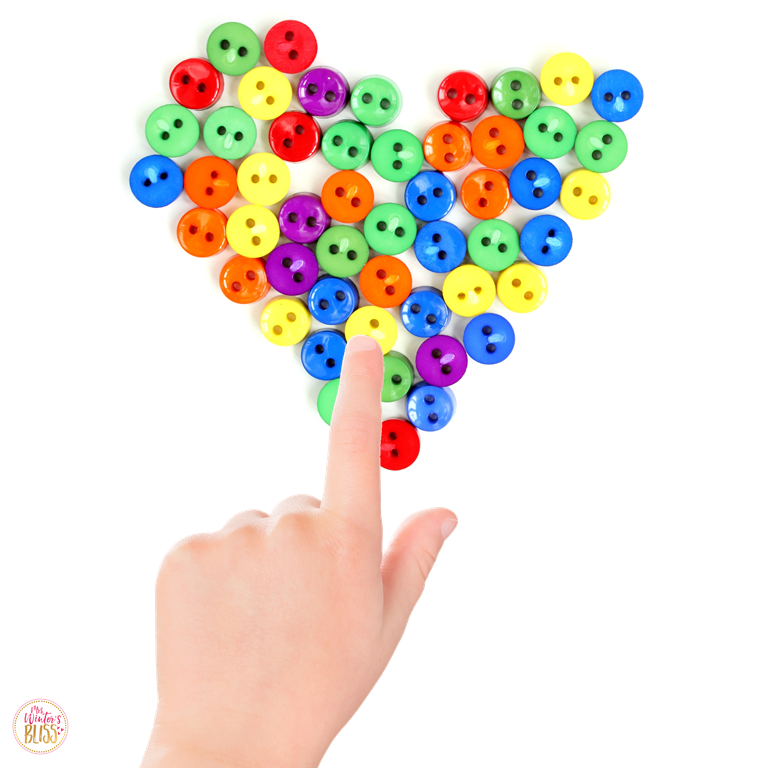
Arranging shapes: Cut shapes out of construction paper, have students ‘paint’ the paper with a glue stick, and then arrange the paper shapes into different designs.
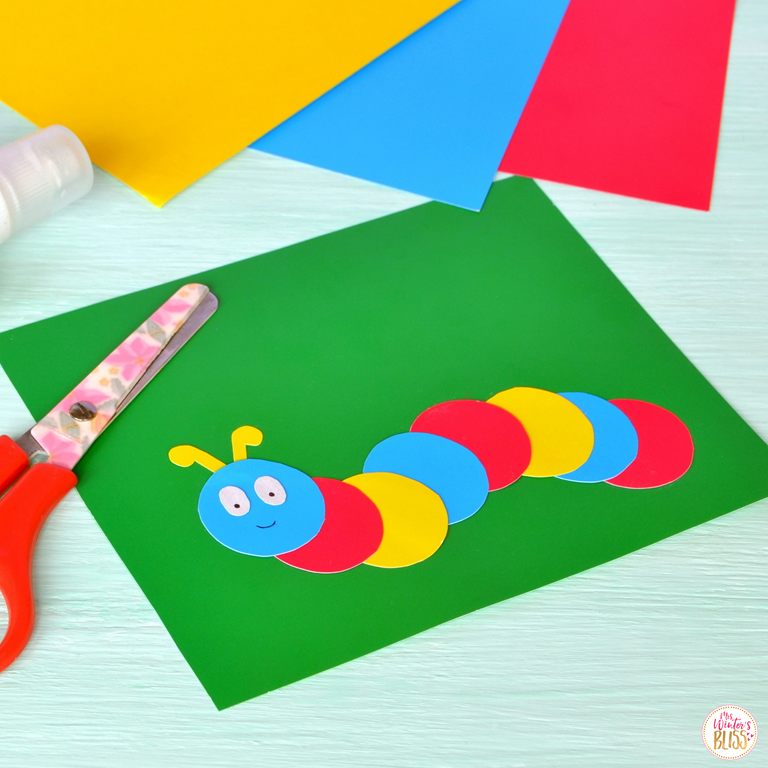
Draw: Yes, simply drawing with pencil and paper is great for fine motor development! A pencil grip can help students use the correct grip. I like this pack because they come with an assortment of grips. You can also just let them have fun with crayons, markers or chalk!
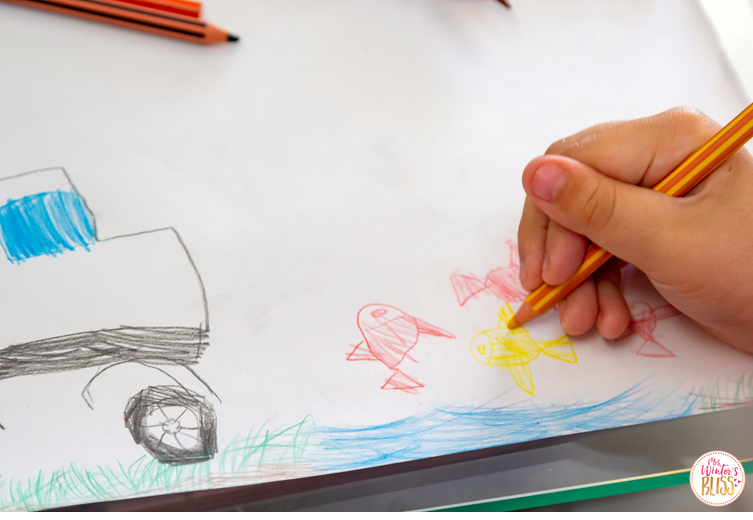
Paint with a Q Tip: The fine ‘pinch’ grip required to hold the small q-tip and to move it around the paper to paint is ideal for building on those smaller muscles of the hand.
Thread Beads: When children thread beads they are using similar hand movements that they use when holding a pencil.
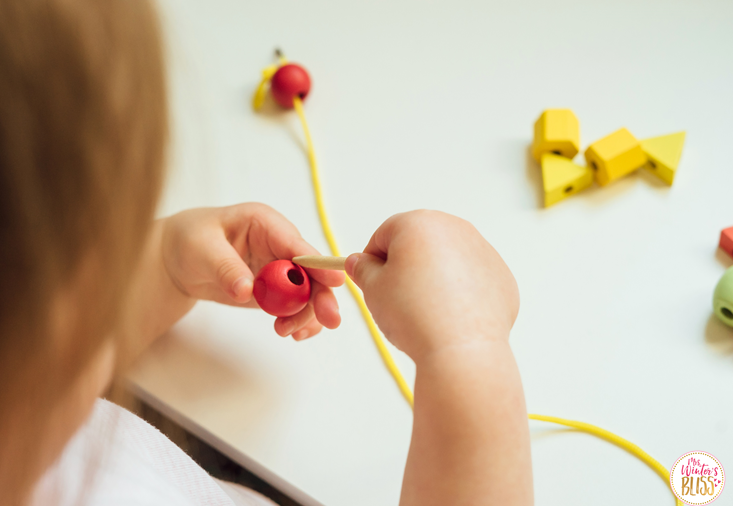
Use Threading boards: I love these because they incorporate threading and learning to tie shoes!
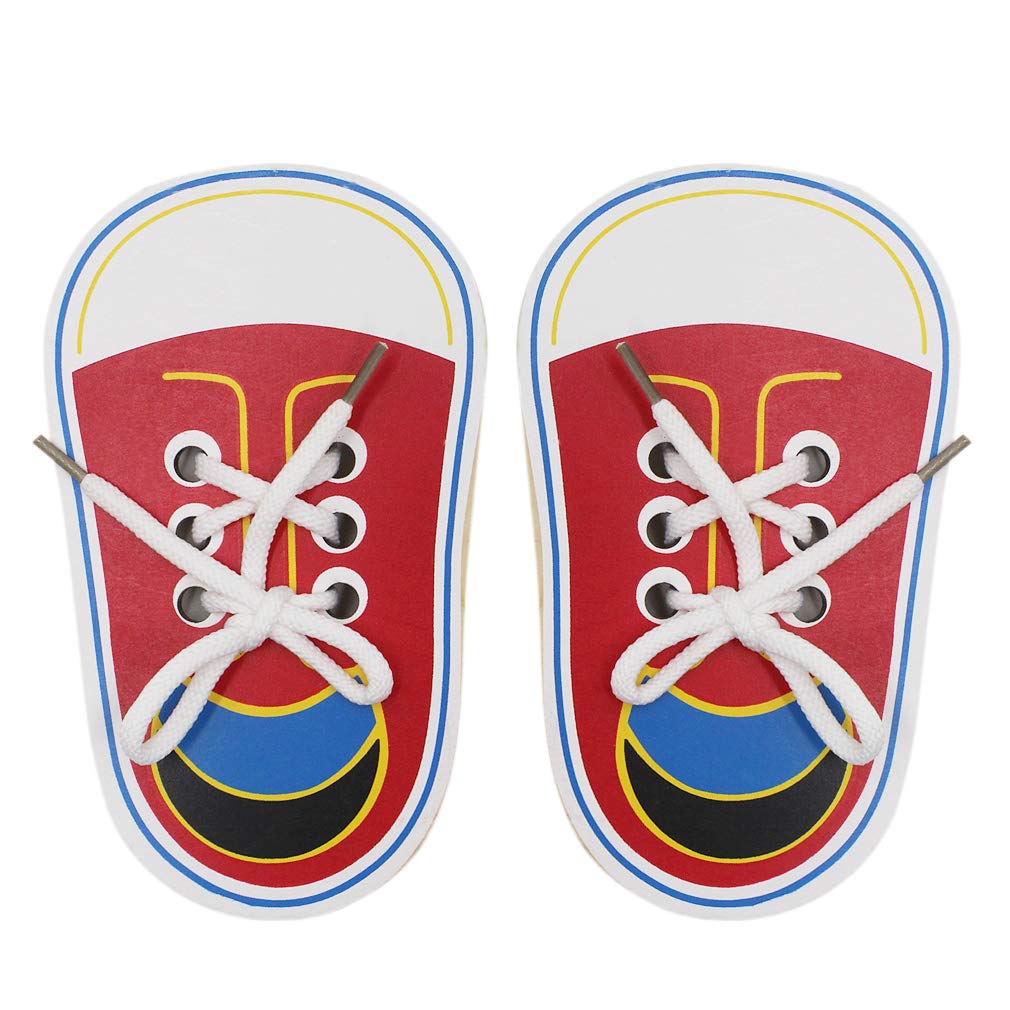
Or have a child use a hole punch to create their own as they did in this video!
Use Tweezers or Clothespins: Use tweezers or clothespins to pick up and sort small objects like mini pompoms, cotton balls or beads. Transfer them from bin to bin or sort them into empty ice cube trays!
Use a Paint Dropper: When kids use paint droppers they are strengthening their hand muscles and isolating the fingers they need for handwriting! There are lots of fun science and art projects you can do with them, or just let kids have fun squeezing and squirting!

Play-Doh: Simply let kids roll, squeeze, stretch, pat, pound the Play-doh. Or use tools such as plastic knives, scissors, or rolling pins for cutting and rolling it!
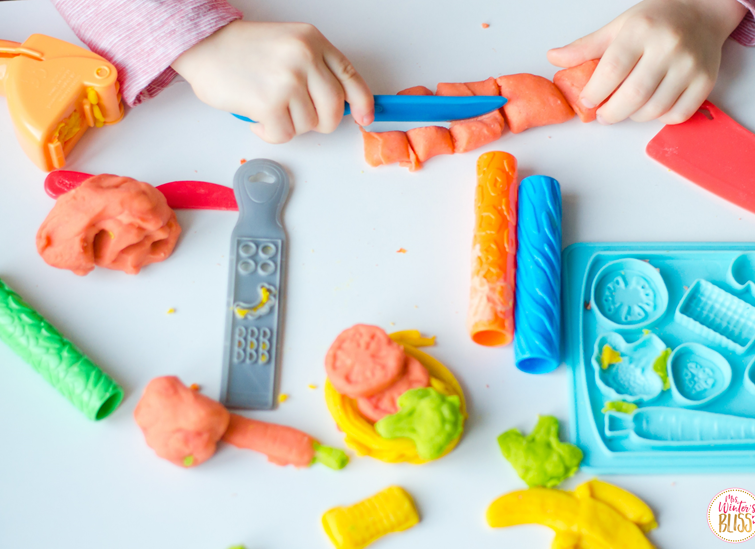
Use Scissors: Using scissors strengthens hands and fingers, develops hand-eye coordination and bilateral coordination. Begin by simply snipping things- paper, straws, erasers, etc. When they’ve got that down, teach them to cut along lines on paper, then curves and zigzags.
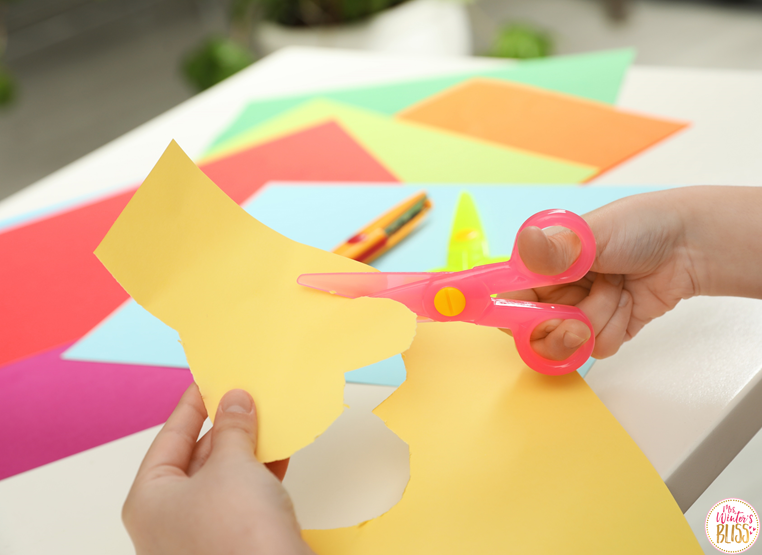
Play with Building Blocks: When kids hold a block with the pads of the thumb and pointer and middle fingers, they are developing the skills they need to manipulate a pencil. Let them build on their own or copy building designs you have created to help further develop visual perceptual skills.
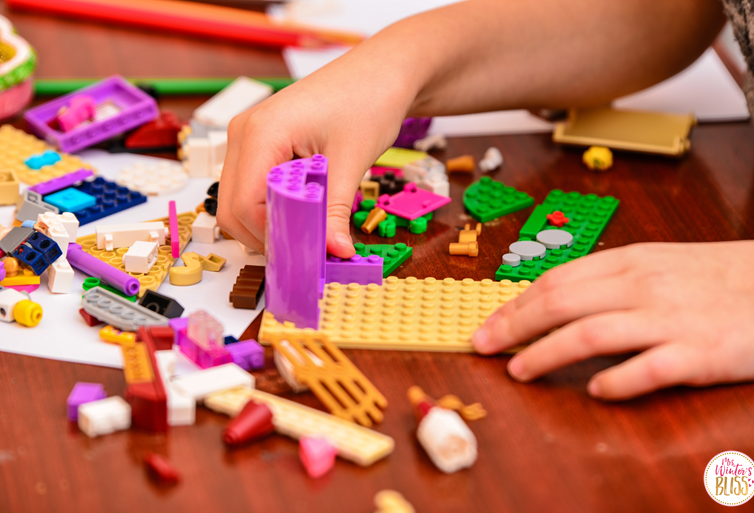
Use a Hammer and Nails: What kid wouldn’t love hammering?! No need to bust out the power tools! By simply letting kids hammer golf tees into a pumpkin, match sticks into playdoh, or small brass nails into a piece of cork, they’ll be strengthening their hands for writing and developing hand-eye coordination. For even more engaging practice, try something like this drill toy set!
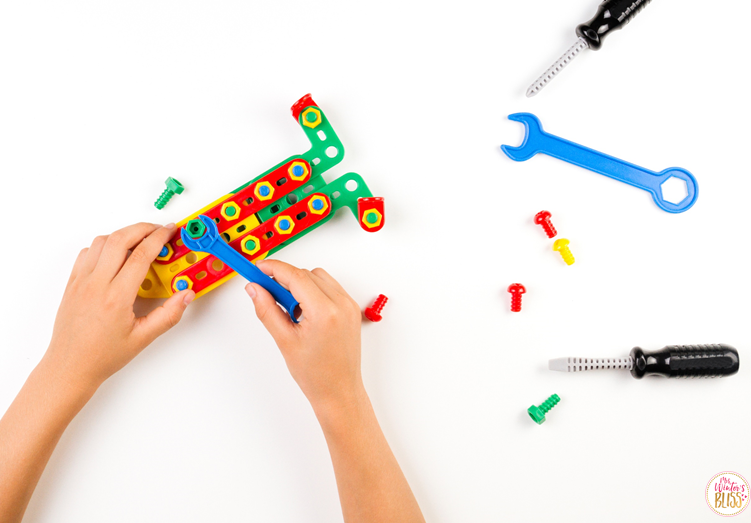
Matchbox Car Races: Kids will love manipulating their little cars along these tracks! Grab yourself these FREE task cards and let the races begin!
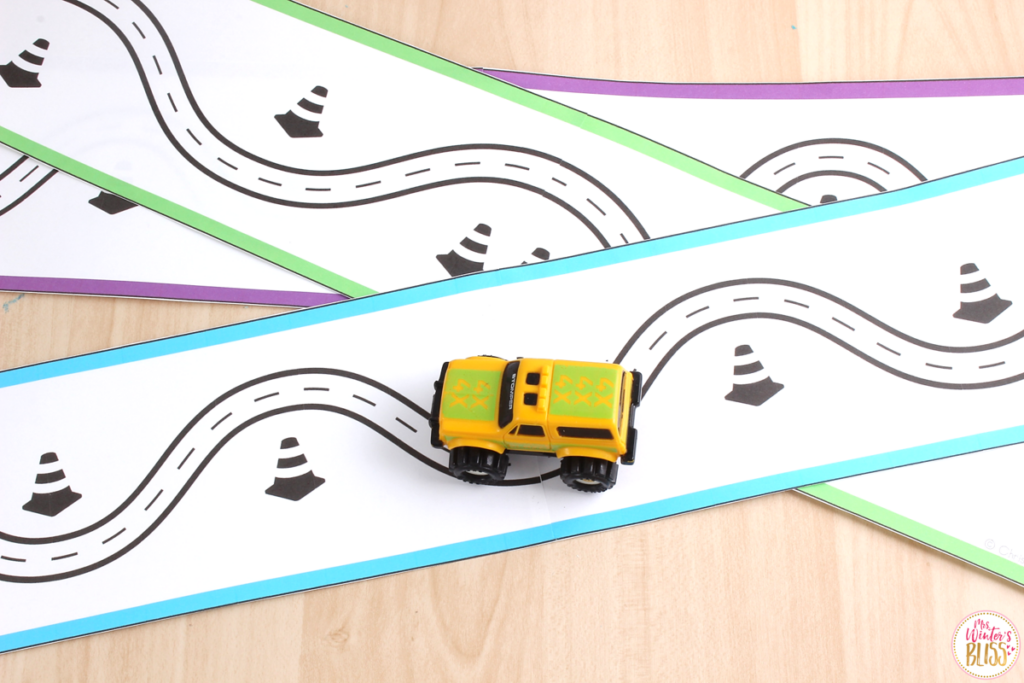
DOWNLOAD these FREE Car Tracing activities here!
If you’re looking for more creative resources and ideas for developing fine motor skills check out some of my earlier posts where I discuss the importance of fine motor development and share ideas (and FREEBIES!) that combine fine motor skills with other important skills.
Here I shared my FINE MOTOR ALPHABET ACTIVITIES, a bundle of letter tracing activities that help students develop fine motor skills and hand-eye coordination while they work on proper alphabet letter formation.
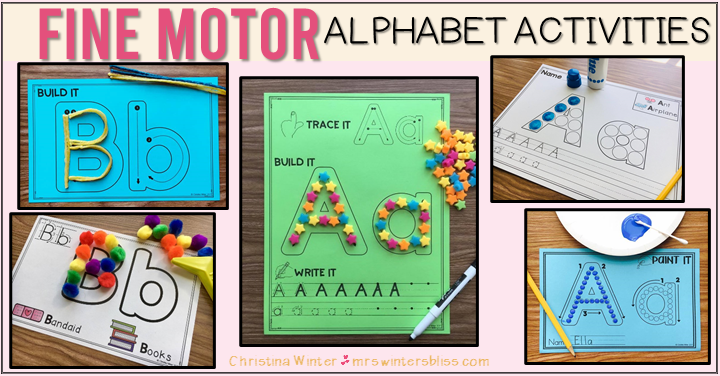
In this post I shared my FINE MOTOR NAME ACTIVITIES, a resource that helps young learners develop fine motor skills while they work to recognize, learn to spell, and write their names!
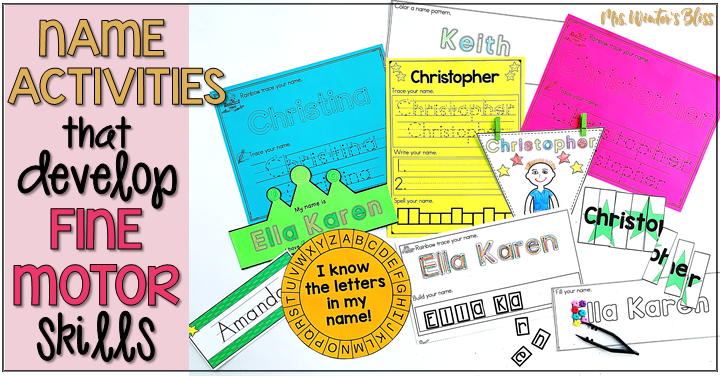
And finally, check out this post where I shared my SIGHT WORD PRACTICE WITH FINE MOTOR ACTIVITIES, a resource combines fine motor skills with learning to recognize, read, and spell sight words.
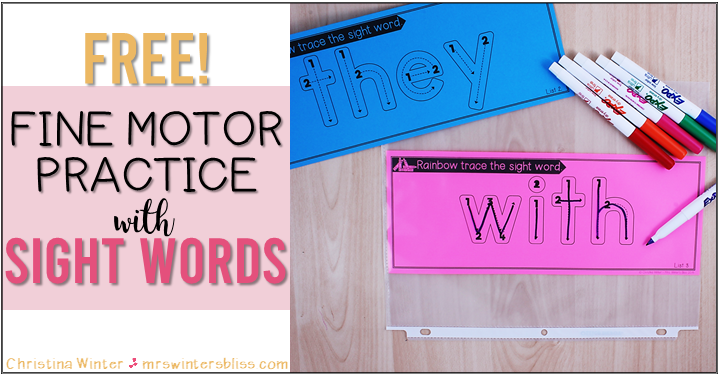
The best way to set our students up for success is by offering multiple, creative, ways for them to develop their skills. I hope the activities I have shared today will allow students to develop their fine motor skills without it ever feeling like “work”- for you or them!
–PIN for LATER–


